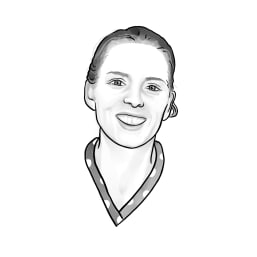
UvA PhD student spoke to obese children: “They are never asked anything”
One in five children in Amsterdam is overweight. Care is inadequate, according to youth nurse and UvA PhD candidate Siegnella Concincion, who engaged with obese children in Amsterdam-Zuidoost through activities and drawings. “The idea is that if parents are consistent, everything will be fine. In practice, that doesn’t work.”
Siegnella, why are so many children in Amsterdam overweight?
“It has everything to do with the society we live in. There is a wide range of unhealthy food available and we don’t get enough exercise on a regular basis.”
“Children living in poverty are more likely to become overweight. Healthy food is more expensive: a bunch of bananas costs more than a bag of white bread rolls. I spoke to a single mother who works at the Albert Heijn supermarket during the day and as a cleaner in the evenings to make ends meet. If you have to struggle to keep your head above water like that, it’s simply not possible to put a healthy meal on the table every day.”
“Healthy living also has to do with your postcode. If you live in Bijlmer-Oost, the nearest sports centre is in Bijlmer-Centrum. As an eight-year-old child who is severely overweight, you can’t get there on your own by tube or bike.”

What kind of care can overweight children count on?
“In the Netherlands, there are central care providers, often youth nurses, who refer children to a paediatric physiotherapist, a dietitian or a youth psychologist if necessary. A central care provider can serve about twenty children per year, while in Amsterdam we have fifteen central care providers for 10,000 overweight children. So that’s not enough.”
“This care is also usually focused on the parents and parenting; little is asked of the children themselves. The idea is that if parents are consistent enough, prepare healthy meals and ensure their children get enough exercise, everything will be fine. In practice, that doesn’t work.”
Can you give an example?
“I referred an overweight boy to a paediatric physiotherapist, but when I went for a walk with him, I found out that he wasn’t going. He told me that he was extremely ashamed of his body in gym class because he was the only one who was obese. We have now arranged for him to exercise alone with the paediatric physiotherapist, and he is going. In short, if you don’t take the child’s perspective into account, the intervention is less likely to succeed.”
What was it like talking to the children?
“Not easy. If you want to talk to a six-year-old, you really have to invest in building a relationship of trust by spending time and giving attention too the child. I let the children choose how they wanted to express themselves. That could be by going for a walk, playing a game or writing a poem. The vast majority wanted to draw a picture. For children between the ages of 6 and 13, it is often easier to draw their feelings than to put them into words.”
“I often spent an hour and a half to two hours with children at home. The children would draw and I would ask them questions about their drawings. All kinds of feelings came to the surface, especially from the coronavirus pandemic. There was a lot of fear about the coronavirus. Children also had to deal with boredom. They were stuck at home because schools were closed and fell back into old habits: eating more, playing a lot of video games, no structure in their day. Those children gained even more weight.”
In addition to her thesis, Siegnella Concincion compiled a children’s book with children with obesity in Amsterdam-Zuidoost. “After the coronavirus pandemic, there was a lot to read about mental health and weight gain in children with obesity. But their own stories were nowhere to be found. This book gives the children a voice and aims to change that.”
What do overweight children need?
“Children indicated that it is important for them to be able to play sports close to home with their friends. It also needs to be a safe place where they can do activities. Logistics are also important, such as having someone who can supervise the children. This is often difficult for single parents living in vulnerable situations.”
In practice, healthcare providers often don’t have time to spend hours drawing with children.
“Absolutely, but I also show in my thesis that you can use more participatory and creative approaches in a consultation room. I now always have markers, drawing paper and games on my desk. It’s also about the attitude of healthcare providers. It has to be a collaboration, and a child must feel seen and heard.”
“And think outside the consultation room. As a healthcare provider, you have to be where the children are. So make more home visits, or spend half an hour at the playground to talk to children and join in. Think creatively about how you can connect more with the world of children.”
Siegnella Concincion will defend her thesis entitled Building Communicative Spaces with Children in Paediatric Obesity Care and Research. The Importance of Children’s Perspectives in Integrated Care during and after the COVID-19 Pandemic on Friday 25 April at 11:00 a.m. The defence will take place in the Lutheran Church.



